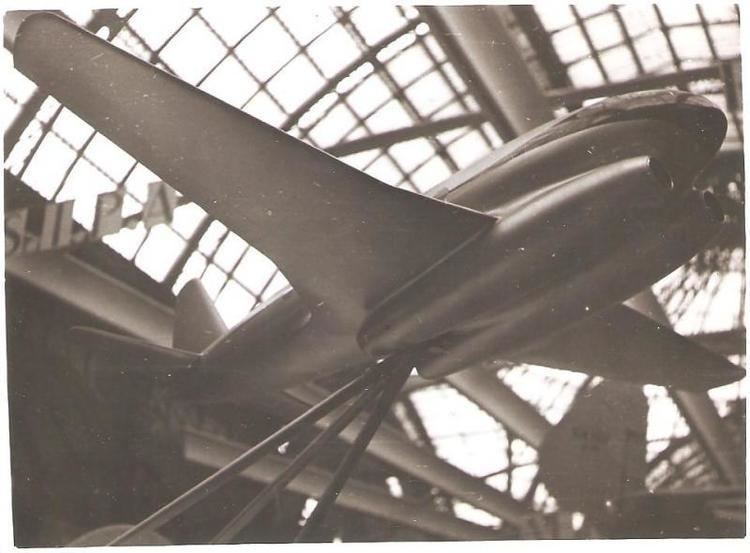Range 1,000 km Cruise speed 800 km/h | Wingspan 18 m Weight 6,300 kg | |
 | ||
The Fokker F26 was an early jet airliner design by the Dutch aircraft manufacturer, Fokker.
Contents
Development
During the era before the Second World War, Fokker was one of the world's largest manufacturers of passenger aircraft. After the re-emergence of the Fokker company in 1945 (its founder, Anthony Fokker, had died in the United States in 1939), the company made ambitious plans for reconquering the market it once dominated. Therefore, in 1946, the company came up with a design of a jetliner.
The design materialised through cooperation between Fokker, the Dutch airline company KLM, and the Dutch national institute for aircraft development, the Nationaal Instituut voor Vliegtuigontwikkeling (NVI). Design progressed quickly and a model of the F26 was shown at the first postwar aviation fair, the Paris Air Show of November 1946. The model attracted a lot of interest, but no orders were gained.
Further development of the F26 was hampered by the attitude of KLM. KLM executive Mr Plesman believed that design, marketing and production of a jetliner was too big a project for Fokker alone. He therefore pushed Fokker for cooperation with British manufacturer de Havilland. Although some cooperation took place, mainly on engine-related issues, a combined effort in producing jetliners never took place. However, within ten years, Fokker would develop a more feasible design, the F27 Friendship.
In its publications the Fokker Company often stated that the F26 Phantom was a conceptual design. Its purpose was to be a technical and economical feasibility study only. Therefore, the F26 was never intended to become reality. On the other hand, the Fokker Company expressed the expectation at the Paris Air Show of 1946 that the aircraft was about to fly in three years time. Regardless the real business expectation was, the significance of the F26 design lies in its early appearance. Although the aircraft industry in general considered jetpowered aircraft to be the future, no jetpowered passenger aircraft were designed by then.
Design
The all-metal F26 design consisted of a low-wing layout with a 17-seat pressurized fuselage, a fully retractable gear and two Rolls-Royce Nene RB.41 series I jet engines. With a thrust of 23 kN (5,171 lbf) each, these engines were the most powerful engines available at the time. The aircraft was designed for a flight crew of three people.
The passenger cabin had a single aisle layout, with two seats abreast on the right and a single row on the left. The aft side had a toilet section and two cargo bays. The aircraft was to be flown by two pilots and one radio operator.
Based on design studies the F26 had an economical cruise speed of 800 km/h (497 mph) with a range of 1,000 km (621 mi).
Specifications (Fokker F26 estimated)
Data from
General characteristics
Performance
General characteristics
Performance
